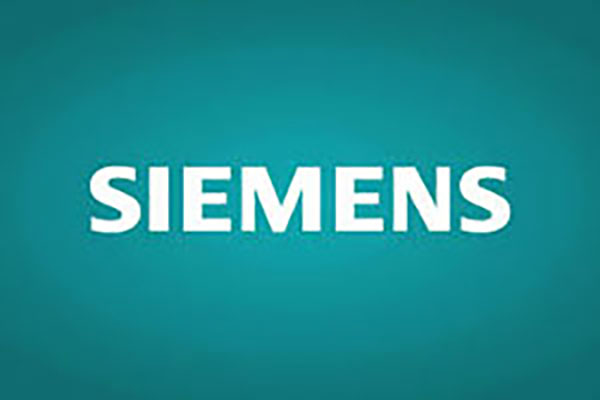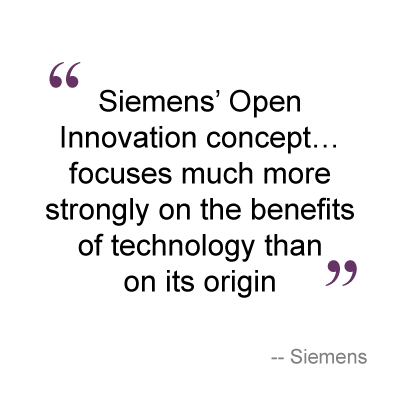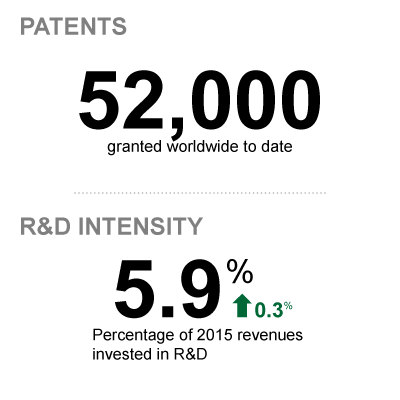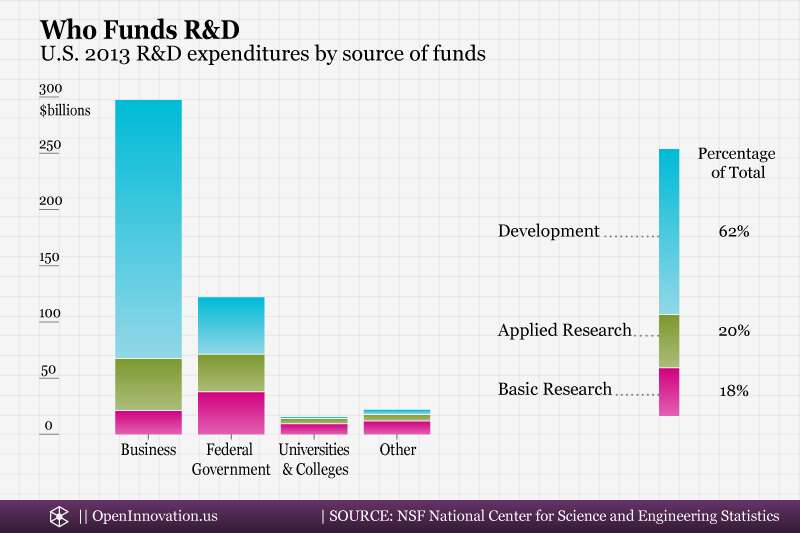Open Innovation @Siemens

Revenues: €75.6 billion
Overview
Founded in 1847, Siemens is a global technology conglomerate and the largest engineering company in Europe. The company is based in Germany and is a key player in the energy and healthcare industries among others. Siemens largely caters to business and industrial customers, with products ranging from automation systems, turbines and transformers, and train equipment. Siemen’s healthcare business is separately managed and has become a leader in diagnostics and medical imaging.
APPROACH TO INNOVATION
As a technology leader, Siemens needs to constantly innovate to stay competitive and maintain market-leading positions. Their innovation strategy consists of 5 elements:
- Adopt a leadership role in technology
- Promote Open Innovation
- Drive forward digitalization
- Tap growth areas
- Live Business Excellence
The commitment to open innovation seems to be especially strong. Siemens maintains a broad innovation network that includes research institutes, industry partners, and startups that the company uses as external sources and collaborates with to develop new technologies.


KNOWLEDGE SHARING
Faced with ever shorter innovation cycles, Siemens has come to understand the importance of creating an environment that supports an “unhindered exchange of information”. In 1999, Siemens established TechnoWeb, an online platform that lets employees post pressing company problems and obtain solutions from other users inside the Siemens network.
This is a smart move because it leverages the large Siemens community (over 40,000 experts), while making use of a technology platform to make collaboration more efficient. Internal networks can also help break down silos and promote a culture of collaboration.STARTUP STRATEGY
Engaging with startups can play an important part in the Open Innovation strategy for established companies. Siemens does this in three ways:
- Investing in startups: The Siemens Venture Capital (SVC) provides financing to promising companies. It has invested 800 million euros in over 180 startups.
- Creating startups: Siemens Novel Businesses (SNB) enables the company to experiment with new technology areas and business models by establishing its own startups and reintegrating them into the business as appropriate.
- Scouting for startup partners: Siemens Technology to Business (TTB) centers in Berkeley, Munich, and Shanghai identify and network with startups in emerging areas that are of potential interest to Siemens.
IDEA COMPETITIONS
Siemens has used crowdsourcing platforms to conduct idea contests both publically and internally. Online competitions open to the public have focused on broad topics such as transportation and sustainability, while internal contests have been more numerous and more varied in topic. Siemens uses a methodology of “open co-ideation” to guide the process from ideation to implementation to achieve faster idea maturation and prioritization. In 2015, Siemens also launched Quickstarter, a competition to identify and fund innovative employee ideas.
Idea competitions have been shown to produce innovative solutions to problems. Quickstarter is especially interesting because employees rather than management are involved at all stages of submission, refinement, and selection of ideas. It will be interesting to see if the program is expanded outside of Corporate Technology, Siemens’ central research and development department.RESEARCH PARTNERSHIPS
Siemens utilizes research partnerships extensively to strengthen its innovation pipeline. Through technology scouting, the company identifies external partners that can provide technical solutions, including other high-tech companies it can partner with. Universities and research institutes play a key role in supplementing Siemens’ own R&D capacity, with a three-level model of cooperation:
- Partner level: Limited time and subject matter research with uniform rules of collaboration
- Principal partner: strategic projects with trusted research-intensive institutions
- Centers of Knowledge Interchange (CKI): broader long-term research into key technologies with a short list of globally renowned universities.
Resources
- Website: www.siemens.com
- 2015 Annual Report: http://www.siemens.com/ investor/pool/en/investor_relations/Siemens_AR2015.pdf
Open Innovation @ Siemens
Founded in 1847, Siemens is a global technology conglomerate and the largest engineering company in Europe. The …
Open Business Models, By Henry Chesbrough
Open Business Models builds on Chesbrough’s landmark first book Open Innovation, to delve even deeper into how companies …
Best Mode
noun | best·mode |
One of the disclosure requirements for obtaining a patent. The inventor must disclose the best way he knows of carrying out his invention, which could include specific materials or methods. The goal of this requirement is to obtain full disclosure from inventors so that others can practice the invention.
Want to get involved?



